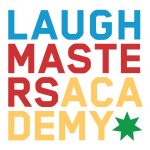Staying Present and Aware
Here’s a interesting article from the Harvard Business Review about using meditation to stay present and aware in life and in business. They make some great points, but as any Improvisor will tell you, meditation is not the only way to stay “present and aware.” After all, that’s a huge part of what learning improv is all about.
So if meditation isn’t your thing, or even if it is, Pre-Register for a Laugh-Masters Academy Workshop today. We’re optimistic it will help you to live in the moment, think more rationally and authentically (and less emotionally), develop ideas faster, work easier with colleagues and improve your communication skills in general.
Mindfulness for People Who Are Too Busy to Meditate
Via: Maria Gonzalez / Harvard Business Review
Mindfulness has become almost a buzz-word. But what is it, really? Mindfulness is, quite simply, the skill of being present and aware, moment by moment, regardless of circumstances.
For instance, researchers have found that mindfulness can reprogram the brain to be more rational and less emotional. When faced with a decision, meditators showed increased activity in the posterior insula of the brain, which has been linked to rational decision making. This allowed them to make decisions based more on fact than emotion. This is good news since other research has found that reasoning is actually suffused with emotion. Not only are the two inseparable, but our positive and negative feelings about people, things, and ideas arise much more rapidly than our conscious thoughts, in a matter of milliseconds. We push threatening information away and hold friendly information close. We apply fight-or-flight reflexes not only to predators but to data itself.
In order to reap the benefits of mindfulness, there are specific techniques that you can practice to improve your skills. You may have heard about a mindfulness-enhancing technique where you sit in stillness and practice meditating for a period of time before going about the rest of your day. This is definitely valuable. But I have a bias for being able to practice mindfulness all day, in every circumstance. In essence, you start living all of life mindfully and over time there is no distinction between your formal practice and making a presentation, negotiating a deal, driving your car, working out, or playing a round of golf.
Try a technique I call “micro meditations.” These are meditations that can be done several times a day for 1-3 minutes at a time. Periodically throughout the day, become aware of your breath. It could be when you feel yourself beginning to become stressed or overwhelmed with too much to do and too little time, or perhaps when you feel yourself becoming increasingly distracted and agitated.
In becoming aware of the breath, notice how you are breathing. Is it shallow or deep? Are you holding your breath and in so doing perhaps also holding your stomach? Or hunching your shoulders?
The next step is to start breathing so that you are bringing the breath into the belly. Do not strain. If it feels too unnatural to breathe into the belly, then perhaps bring the breath down to the lower chest. If the mind wanders, gently come back to the breath — without judging yourself for momentarily losing focus.
You will notice that by regularly practicing this micro-meditation you will become more aware and more calm. By practicing this regularly you will train yourself to be more and more mindful, and increasingly calm and focused. You can create reminders for yourself to practice these meditations two-to-four times a day; every hour or so; or before you go to a meeting — whatever is feasible. You can also use them on an ad-hoc basis to prepare for a meeting or a presentation, when you are stressed, or when multi-tasking is eroding your concentration. Micro-meditations can put you back on track, an help you develop your mindfulness muscle.
A second technique I use is “mindfulness in action.” Instead of adding a new routine to your day, you just experience your day a little differently by paying attention in a particular way, for seconds at a time.
For instance, if you have ever found yourself in a meeting and suddenly noticed that you missed what was just said or that you were “somewhere else” for the last few minutes, chances are you stopped listening. You could have been thinking about your next meeting or everything on your to do list, or perhaps you just zoned out or were focused on an incoming text message. This is incredibly common. Unfortunately, it is the cause of huge misunderstandings, missed opportunities and wasted time.
When in a meeting, try, to the best of your ability, to only listen for seconds at a time. This is harder than it sounds, but with practice you will be able to do listen continuously, without a break in concentration. Whenever you notice that your mind has wandered, come right back to listening to the voice that is speaking. You may have to come back dozens of times in a single meeting. That is extremely common; we don’t actually realize how often the mind wanders. Always bring yourself back gently and with patience. All you are doing is training the mind to be right here, right now.
These techniques quite literally train the mind and rewire the brain. And as a result, three critical things happen. First, your ability to concentrate increases. Second, you see things with increasing clarity, which improves your judgment. And third, you develop equanimity. Equanimity enables you toreduce your physiological and emotional stress and enhances the chances that you may find a creative solution.
Practicing mindfulness – and reaping its benefits – doesn’t need to be a large time commitment or require special training. You can start right now – this moment.
